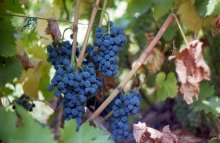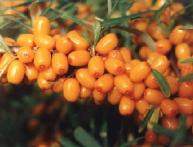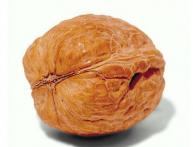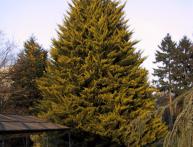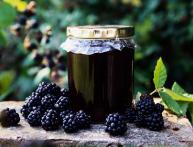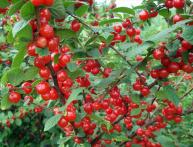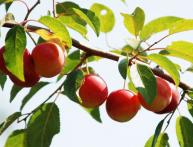Northern Saperavi grapes, variety description, planting and care
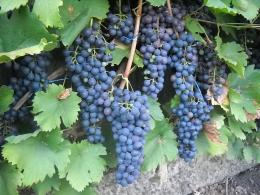
Successful cultivation of grapes is traditionally considered possible only in regions with a warm climate and a large number of hot and sunny days. Although almost two centuries ago, monks on the very northern and cold island of Valaam mastered viticulture and grew this heat-loving plant along a stone wall, so that when heated by the sun, the stones would give off their heat to the plant.
Over time, breeders have developed varieties suitable for growing in regions with moderately warm weather in summer and frosty winters. Grape Northern Saperavi can be classified as one of these varieties.
Content:
- Description of the northern Saperavi grape variety
- Features of planting northern saperavi in the garden
- Caring for northern saperavi grapes
Description of the northern Saperavi grape variety
Perhaps someone has come across red Georgian wine “Saperavi” on sale, and so, it is produced from the technical variety of Georgian Saperavi grapes. Its berries are distinguished not only by their dark skin, but also by their pulp, colored dark red. Due to this, the wine produces such a rich color that Saperavi was used as a dye variety.
Based on the Georgian saperavi, after the war the northern saperavi variety was obtained. It is believed that the variety appeared in 1947, although the year of official recognition is considered to be 1958. The breeders of the variety were Potapenko I.P., Potapenko Ya.I., Zakharova E.I.The berries of the new variety received from the parent form the same rich, dark blue, waxy skin and colored dark pink juice.
In addition, breeders used a second parent form variety Northern, so named because Amur grapes were used when breeding it; the plant is endemic to the Ussuri taiga. The northern Saperavi variety received endurance from the second parent form.
The berries are collected in a conical bunch with branches. The average weight of the bunches is up to 110 g. The size of the berries for a technical variety is quite large. If you weigh 100 berries of the northern Saperavi variety, their weight will be 125 grams. The shape of the berries is oval, the number of seeds in the berry is 2 - 3. The taste is harmonious, the sugar content ranges from 20 - 25 g. The amount of acid is from 6 to 11.3 g / l.
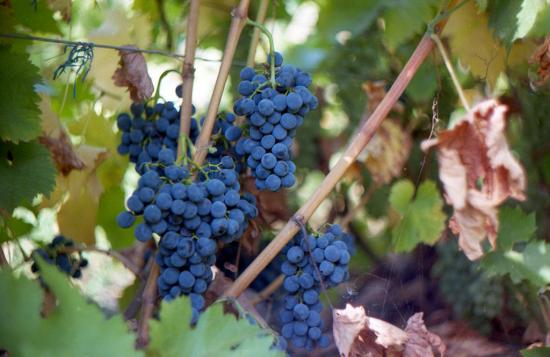
Northern Saperavi belongs to the medium-technical category, late varieties. The ripening of the crop occurs 140 days from the beginning of the opening of the eyes or, as they sometimes say, the overwintering buds. In most regions, berries at technical ripeness begin to be picked in the second half of September.
Some features of the northern Saperavi variety should be noted:
- resistant to mildew and gray rot only if agricultural practices are followed
- resistant to frost, can withstand without shelter up to -23
- leaves are often whole or slightly dissected
- in autumn the leaves turn wine red
- drought resistance is below average
- excellent yield, from 72 to 115 c/ha
- left on the vine after ripening, does not fall off or spoil for up to 30 days
The northern Saperavi harvest is recommended for the production of juices, most often as part of several varieties and table wines. In 1964, a wine called “Quiet Don” was produced from the northern Saperavi variety.The wine belonged to dessert wine, had a beautiful ruby color and harmonious taste.
The berries were collected when the sugar level was above 20 g. In 1965 and 1968, it received gold and silver medals at international exhibitions, respectively. The wine was ordinary, after 4-6 months it was bottled and sold. Now the variety is popular in the production of homemade wine. Let's try to figure out how plant this variety in the garden plot.
Features of planting northern saperavi in the garden
Selecting a location
In general, the northern Saperavi variety is recommended for cultivation in the North Caucasus, Krasnodar Territory, and Rostov Region. However, he gradually developed more northern territories. According to reviews, it overwinters well without shelter, even if winter frosts reach -30. Although, of course, in the middle zone and further north it is advisable to grow it with shelter for the winter.
Video about grapesperavi northern:
Northern Saperavi is undemanding in terms of soil quality, but it is best to plant it in damp places or where it is possible to organize additional watering. It is advisable to choose a small slope, oriented to the south, southeast, southwest and protected from the wind. Any building, fence, planting of tall trees can successfully cope with this role.
Landing
Planting grapes like any other bush or fruit tree, begins with preparing the planting hole. If the shape of the pit is not particularly important, then the depth and width are very important. For northern saperavi, the size of the hole should be related to the size of the root system. Some seedlings of this variety are rooted, and some are grafted. Most often, vigorous varieties serve as rootstocks. As a rule, a hole 0.8 m deep and the same diameter is sufficient.Taking into account the size of adult bushes, the distance between holes should be at least 2.5 m, and between rows at least 1.5 m.
Part of the top soil is mixed with 1 - 2 buckets of humus, 2 - 3 tbsp are added. l. potash and phosphorus fertilizers. If the soil is sandy, then you can add chernozem and clay in the amount of 0.5 buckets.
The resulting mixture is poured onto the bottom and lightly pressed down so that the remaining depth is enough for the roots. At least 1/3 of the mixture should be left to cover the roots from above. It is advisable to prepare the hole a couple of weeks before planting, but if this is done immediately before planting, then the soil must be compacted well. Depending on the climate, planting is carried out both in autumn and spring.
When planting northern saperavi in spring, you need to wait until the average daily temperature is no lower than + 10. If the seedling has well-developed heel roots, then it is better to trim them and leave them no more than 15 - 18 cm in length. Before planting, the seedling is kept in a solution of any root former for several hours. The seedling is placed in a hole, the remaining soil is poured on top, it is leveled and compacted. The top of the hole is covered with the remaining earth. Water with a bucket of water and mulch with peat.
Caring for northern saperavi grapes
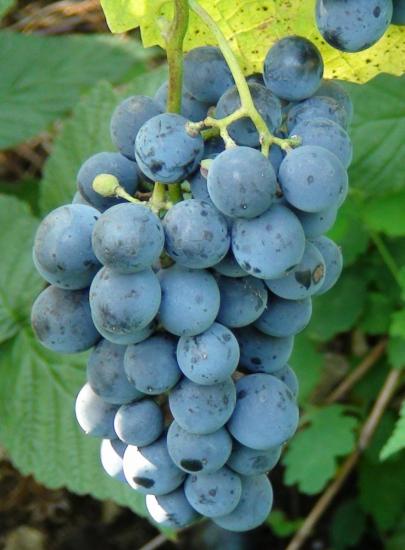
In dry summers, regular watering is necessary, the amount of water per bush is at least 2-3 buckets. The tree trunk circle is mulched after watering. Despite the frost resistance indicated in the description, in the first 2 - 3 years the plant must be covered for the winter. It is recommended to grow on a trellis, forming a multi-armed fan. For this you need pruning shoots up to 6 eyes.
The optimal load on the northern saperavi bush is up to 30 - 35 shoots.The peculiarity of grapes is that if not picked on time, they do not crumble, but weigh as a whole bunch for at least a month, after which they begin to wilt. Although the variety is considered technical, with a sugar level of up to 25% and a minimum acid content of 6%, it is readily consumed fresh.

